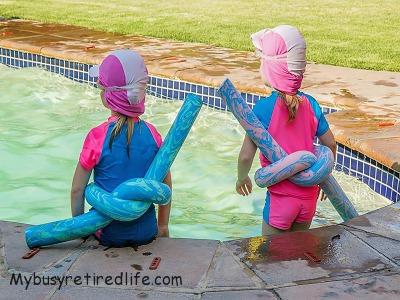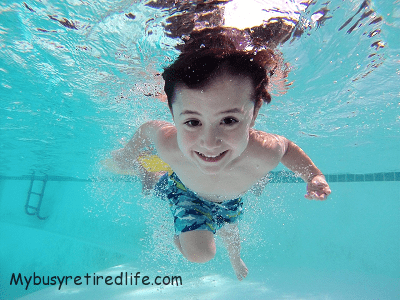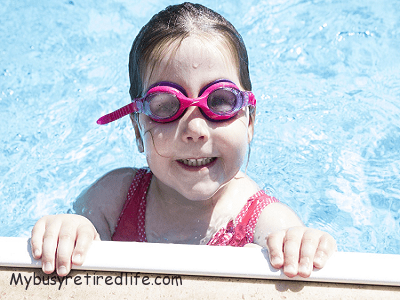There’s Poop in the Pool
It happens kids are in the pool and then suddenly there’s poop in the pool. So what do you do when this happens? It happens all too often but when it happens to your pool it completely throws you on what you should do and how should you do it.
There is a lot to consider, the safety of the swimmers, the safety of the water, the safety of the pool equipment. Any way you look at it as a homeowner-pool owner you have a lot of work ahead of you to help your pool recover.
Everybody out of the pool!
First off “No you do not need to drain the pool!” Ok that one is now off the table. Raising the chlorine concentration of the pool water will be needed for hours if not days. This increases the risk of pool chemical injuries to swimmers. So it’s adios swimmers. Respiratory distress or chemical burns can happen to your swimmers at these levels. Poop in the pool equals pool closure time.
CDC testing of pathogens
Don’t forget to put all tools used to remove the poop back into the pool to kill those nasty bugs too.
If it’s diarrhea you have big problems. Your going to try to remove as much poop as possible(net or bucket methods) but the pathogens connected with diarrhea are more serious. The main pathogen player(hardest to kill) you’re facing could be Crypto. Now you’re going to need to raise the chlorine levels beyond pool shock treatment levels. You’re looking at hyperchlorination(20-40ppm range). Killing those pesky little pathogens by chlorine depends on two things, the chlorine level, measured in parts per million and the length of time the pathogen is exposed to that concentration. Some pathogens die quickly and some need more than a week to die.
Choose your chlorine carefully
All chlorine added to kill these pesky bugs needs to be unstabilized chlorine. The reason why unstabilized chlorine is needed is so that the chlorine levels will burn off quicker than stabilized chlorine when the allotted sanitizing time has passed. That way your swimmers can get back into the water in less than two weeks.
Table on Effect of Chlorination(time it takes to kill those nasty bugs)
How much chlorine to use?
Parts per million (ppm) is calculated by weight. One ppm is equal to 1 pound of chlorine in 1 million pounds of water. One million pounds of water is approximately 120,000 gallons. Converting to ounces, (1 pound = 16 ounces) 1 ounce of chlorine in 7,500 gallons equals 1 ppm.Procedure for Hyperchlorination in Public Swimming Facilities – Illinois Department of Public Health Fact Sheet
Protect the equipment
You want to keep the fecal matter out of the pool equipment. So don’t grab the pool hose. If the fecal matter is close to the skimmer turn off the pump until you can get it out of the pool.
How to clean up this mess
The recommendation below is from the CDC on how to handle this situation.
Cleaning and Remediation
Follow these steps to remove formed poop or diarrhea and disinfect the water:
- Close the pool to swimmers.
- Put on disposable gloves.
- Remove the poop using a net or bucket. Do not vacuum the poop from the pool.
- Clean as much poop as possible from the item used to remove the poop and dispose of the poop in a sanitary manner.
- Disinfect the item used to remove the poop by immersing it in the pool during the 30-minute disinfection time described below.
- Remove and dispose of gloves
- Wash your hands thoroughly with soap and water.
- Raise the free chlorine concentration to, or maintain it at, 2 parts per million(ppm) and maintain the pH at 7.5 or less for 30 minutes.
- Confirm that the filtration system is operating properly.
From Cleaning and Remediation Centers for Disease Control and Prevention
Babies and swim diapers
Swim diapers aren’t very effective. The swim diapers can keep formed stool from floating away in the pool, but they don’t do much to prevent bacterial leakage, especially if the baby has diarrhea. Swim diapers do little to prevent urine leakage.
If you’re going to have young children not yet potty trained in the pool it may be best for the health of your swimmers and the pool water to provide a small wading pool. This should limit any possible contamination to the small pool should there be an accident.
Have it on hand
Need a PDF print out for your Pool on how to handle this situation. The CDC has a hand out that gives you rates and times for disinfection based on the chlorine type used and whether it has cyanuric acid in the water. Get your copy here.
Related Articles: Pool Articles



